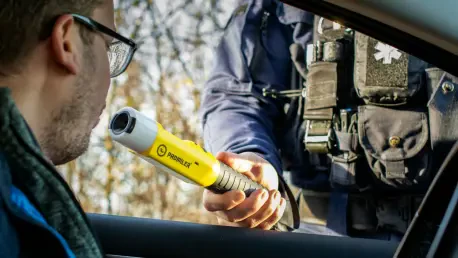A North Carolina neighborhood witnessed an unexpected legal confrontation following a seemingly routine shoplifting call that escalated into a high-speed collision. Officer Jeremy Rodriguez’s decisions on that fateful day propelled a chain of events now scrutinized in court, raising questions about police liability and public safety.
Decisions Made in Seconds, Repercussions Last For Years
At its core, the story reveals a crucial aspect of police work: how split-second decisions can transform a minor incident into a significant legal drama. Officer Rodriguez’s response to a shoplifting call at Walmart did not adhere to standard procedures, resulting in grave consequences. The aftermath of this breach highlights the often unseen legal impact of routine policing, necessitating rigorous deliberation on how such incidents can be prevented in the future.
Missteps in Emergency Protocols and Empowering Accountability
High-speed police pursuits have increasingly come under scrutiny amid growing concerns over public safety and accountability. This case involved navigating populated streets at speeds far exceeding safety limits without activating essential sirens or lights. The implications for community trust are profound, as residents grapple with ensuring their safety is prioritized in such dangerous scenarios. Liability in law enforcement, therefore, is not just about individual incidents but ties into larger questions of institutional accountability and community trust.
Examining Critical Procedural Errors
The collision, driven by Officer Rodriguez’s lack of adherence to emergency protocols, became a focal point for evaluating departmental procedures. His failure to notify backup or properly use the patrol car’s mechanics illustrates systemic training deficiencies. The North Carolina Court of Appeals rejected arguments shielding him under public official immunity, pushing forward claims of gross negligence and inadequate supervision. This legal determination underscores a pivotal shift toward heightened scrutiny of police practices, emphasizing municipal responsibility for officer conduct.
Diverse Perspectives on the Legal Outcome
Insights from varied stakeholders add depth to this unfolding legal saga. Legal analysts point out the ramifications this court decision might have on municipal liability, impacting how cities define their insurance coverages and risk policies. Former officers highlight challenges with procedural training and advocate for meticulous oversight. From victims’ stories, there is a clarion call for heightened accountability and transparency, underscoring the human cost of procedural failures. These views collectively underscore the importance of corrective measures within police departments.
Navigating Toward Safer Policing Practices
With the legal proceedings set to illuminate further implications for police liability, experts recommend a series of strategic improvements. A critical first step involves enhancing procedural adherence during high-stakes situations to safeguard both citizens and officers. Comprehensive training programs should prioritize knowledge of equipment functionalities and scenario-based drills. Cities could further mitigate risks by adopting robust risk management frameworks that allow adaptive strategies in complex incidents, reducing potential liabilities.
As this legal saga unfolds, it has served as a wake-up call for many municipalities to prioritize the review and strengthening of police protocols. The case makes clear the intricate balance between rapid-response policing and procedural adherence, advocating for reforms that bridge gaps between swift action and public safety.









